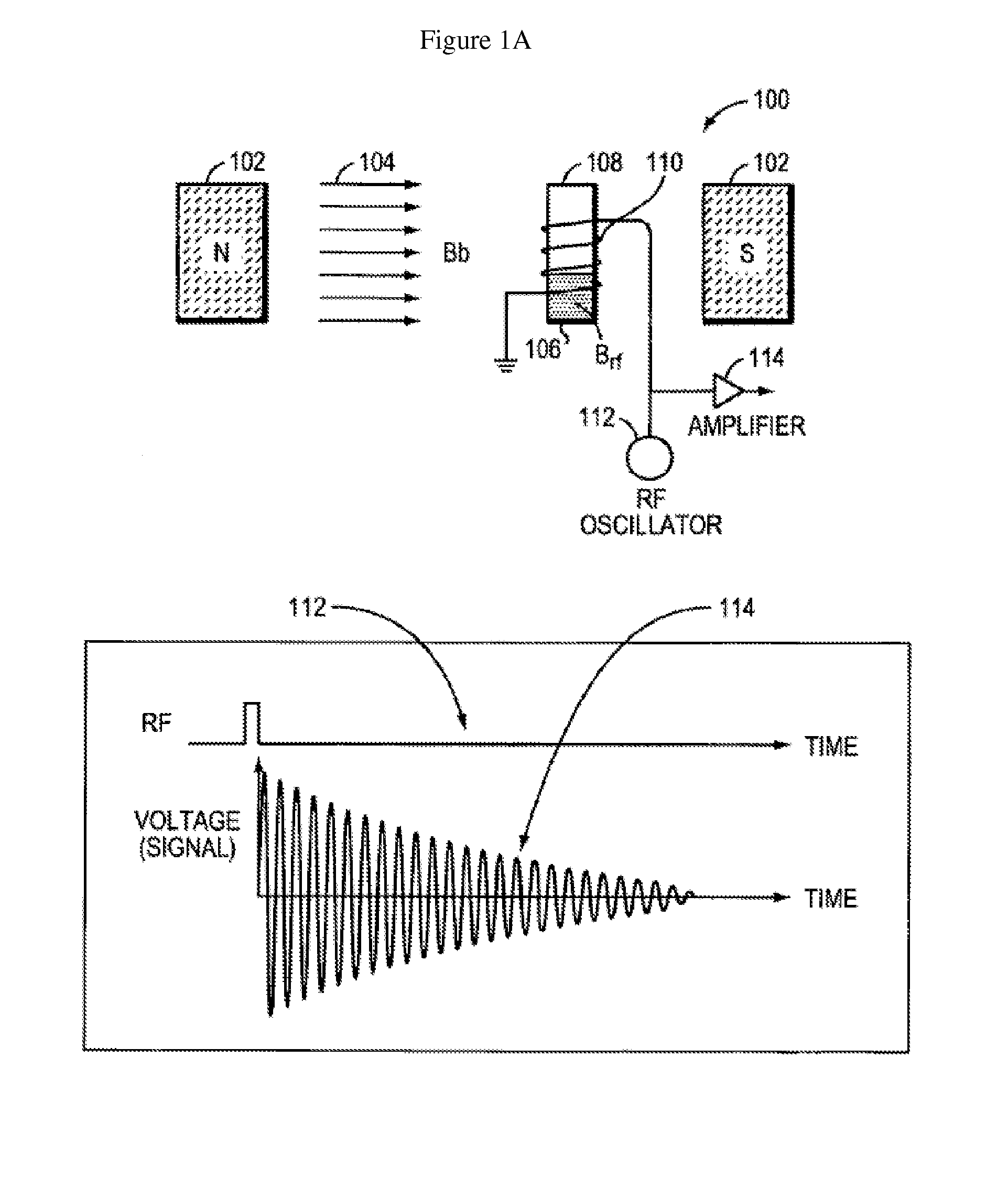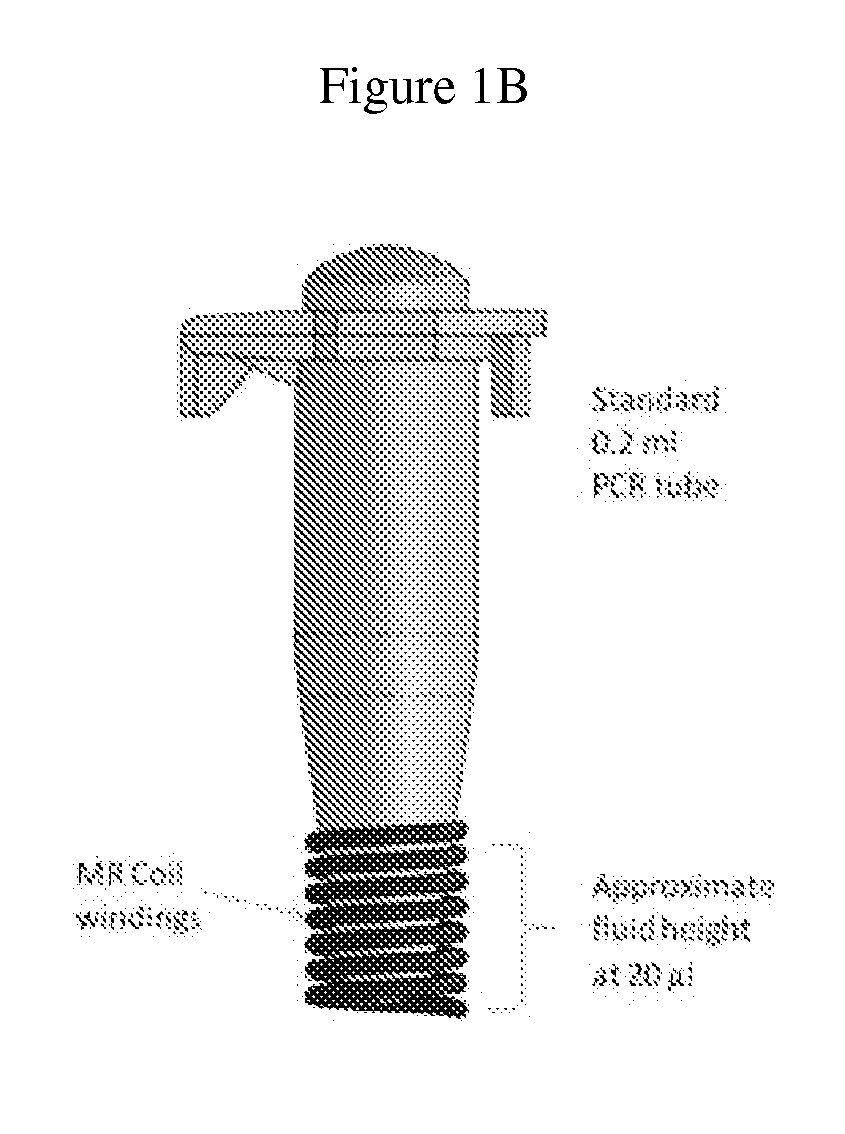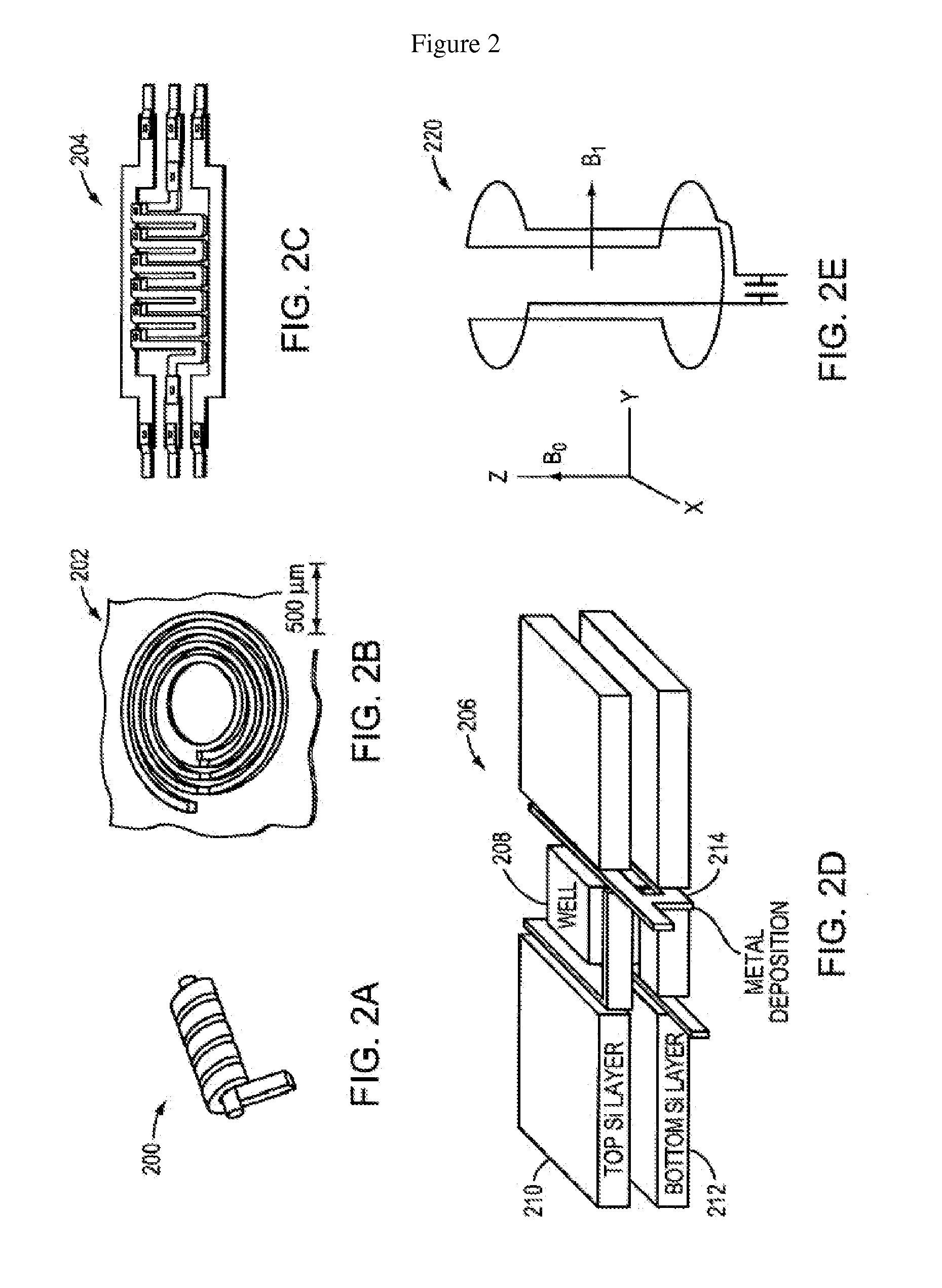Nmr systems and methods for the rapid detection of analytes
a technology of nmr systems and analytes, applied in the field of analyte detection assays and devices, can solve the problems that the binding event leading to cluster formation can become a rate-limiting step, and achieve the effect of facilitating insertion into and removal
- Summary
- Abstract
- Description
- Claims
- Application Information
AI Technical Summary
Benefits of technology
Problems solved by technology
Method used
Image
Examples
example 1
Preparation of Coated Particles
[0477]Briefly, 1 mg of substantially monodisperse carboxylated magnetic particles were washed and resuspended in 100 μl of activation buffer, 10 mM MES. 30 μl of 10 mg / ml 10 kDa amino-dextran (Invitrogen) was added to activation buffer and incubated on a rotator for 5 minutes at room temp. For coupling of the carboxyl groups to amines on the dextran, 30 μl of 10 mg / ml 1-Ethyl-3-[3-dimethylaminopropyl]carbodiimide Hydrochloride (EDC) was added and incubated on rotator for 2 hours at room temperature. Particles were washed away from free dextran 3× in 1 ml of PBS using magnetic separation, then resuspended in 1 ml of PBS. 100 μl of a 100 mM solution of Sulfo-NHS-biotin (Invitrogen) was used to decorate the amino groups on the dextran surface with biotin. After 30 minutes of incubation, particles were washed 3× in 1 ml activation buffer. Next, a protein block of 100 μl of 0.5 mg / ml of bovine serum albumin (BSA) (Sigma) and 30 μl of 10 mg / ml EDC was introd...
example 2
Assessment of Particles Prepared with and without a Protein Block
[0479]Briefly, biotin decorated amino-dextran magnetic particles prepared according to the method described in Example 1 were assayed in PBS and in 20% lysed blood samples in an anti-biotin titration T2 assay.
[0480]The assay was performed with the following procedure. 50 μL of matrix, either PBS or 20% Lysed blood sample, 50 μL of varying concentrations of Anti-biotin antibody, and 50 μL of 1.0 μg / ml secondary antibody were added to a 5 mm NMR Tube. 150 μL of 0.02 mM Fe particles were then added to each tube (i.e., 2.7×108 particles per tube). The samples were then vortexed for 4 seconds and incubated in a 37° C. heat block for 2 minutes. Each sample was then revortexed for 4 seconds, and incubated for an additional minute in the 37° C. heat block. Following incubation, each sample was placed into a Bruker Minispec for 10 minutes, under a magnetic field. After 10 minutes, the sample was removed from the magnet, vortexe...
example 3
Determination of Amount of Dextran Coating
[0490]Attempts to increase dextran coating density on particles have been found to reduce functionality of prepared particles in blood. The preparation of particles described in Example 1 above that demonstrated nearly equivalent buffer / blood performance used a 10× excess of dextran base upon a space filling model to determine amount of dextran to include in coating experiments. In an attempt to functionalize particles with a higher fidelity, increasing the dextran coating to a 1000-10000× excess of dextran in coating experiments generated particles having a thicker dextran coating which yielded a reduced response in blood as compared to buffer. We conclude that a moderate density of dextran with a protein block may be desirable to produce a particle coating that functions well in T2 assays in the presence of blood sample (see FIGS. 40A and 40B).
PUM
| Property | Measurement | Unit |
|---|---|---|
| diameter | aaaaa | aaaaa |
| mean diameter | aaaaa | aaaaa |
| diameter | aaaaa | aaaaa |
Abstract
Description
Claims
Application Information
 Login to View More
Login to View More - R&D
- Intellectual Property
- Life Sciences
- Materials
- Tech Scout
- Unparalleled Data Quality
- Higher Quality Content
- 60% Fewer Hallucinations
Browse by: Latest US Patents, China's latest patents, Technical Efficacy Thesaurus, Application Domain, Technology Topic, Popular Technical Reports.
© 2025 PatSnap. All rights reserved.Legal|Privacy policy|Modern Slavery Act Transparency Statement|Sitemap|About US| Contact US: help@patsnap.com



